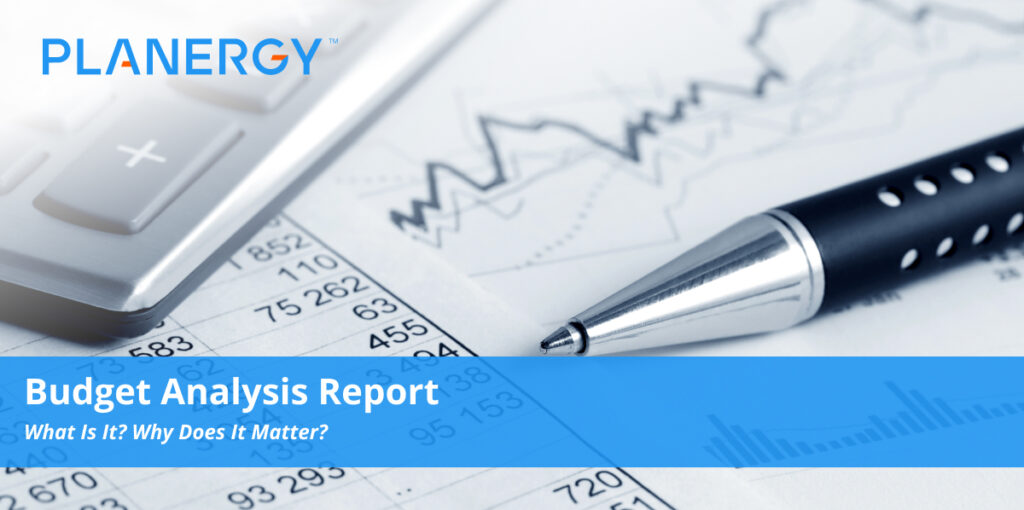Budget Analysis Report
A profit-and-loss budget report is considered a budget analysis tool. Budget managers and executives review a final budget at the summary level. This type of management report compares the budget to actual year-to-date (YTD) numbers as well as forecasts for the rest of the year. It also demonstrates variances between the budget and the previous year’s actual results.
Businesses use budget analysis reports to improve budget accuracy and to review multiple budgets in areas so that they can determine the most likely outcome. When used as part of good practices in a Financial Planning and Analysis Department, a business can improve its ability to produce optimal budgets and reduce the risk of avoidable budget variances occurring.
Whenever business owners create budget proposals or budget plans, they should look at previous budgets to determine the budgeted amounts for everything in the current year. If the current budget is the first year, it’s okay to budget amounts based on industry averages, and then adjust according to what budget analysis reveals.
The budget analysis report helps small businesses compare the original budget with actual expenses and revenue. It is a necessary part of creating a variance report.
Where Report Data Comes From
Your actual historical transaction data comes from your enterprise resource planning systems. In an analysis where budgets or forecasts are used, you’re planning data most often comes from your in-house Excel spreadsheet model or a professional corporate performance management solution.
Why You Need the Profit and Loss By Budget Analysis Report
The profit and loss by budget performance reports lines are forecasted budget with your actual numbers over a specific financial period. This allows analysts to see what budget items went accordingly, which items outperformed expectations and those that did not meet expectations. You can see the difference by dollar amount and percentage. It makes it easy to determine whether you met, exceeded, or didn’t quite reach your financial goals within the given period at just a glance.
When you look at this report with your management team, it’s easy to see where you missed the mark and understand how and where you deviated from your original plan. From there, you can decide whether you need to adjust your forecasts or alter decisions to take advantage of an opportunity or otherwise take action to correct course before your business suffers.
With this information, you’ll be able to determine where you need to dedicate your time as well as your staff time as you move forward.
Budget Variance Analysis: Turning Your Budget Variances into Actionable Data
By definition, your budget will be wrong somewhere at some point. A budget is an educated guess on how much you will spend on things your business needs to operate. As a result, you can’t be one hundred percent accurate since you will undoubtedly spend more money in one place and less in another.
The key isn’t to get your budgets 100% correct, but to continue to grow and adapt them so you can more accurately reflect business operations in your forecast. When you carefully assess all of the line items on your profit and loss budget analysis, you can get actionable data you can use to keep your business on track with its goals and keep up with market trends.
Revenue Variances
Don’t just look at your total sales revenue. Look at your individual line items because this will help you determine whether certain things are generating more revenue or growth than others. If you expected more or less Revenue, determine whether the variance is a sign of a developing Trend or a seasonal response to changing conditions.
Think about the reasons why you may have a variance and whether you need to take any action. If the numbers indicate slow demand or growth, you may need to hire more employees, retiring, or look into more research and development.
Gross Profit Variances
Gross profit refers to the profit you earned for the work that you did.
Did your organization earn a greater or lesser gross profit percentage than anticipated? Whether you end up with a positive or negative variance in your gross profit, determine whether the variance is an indicator of a new trend or anomaly. This is crucial before beginning to make any business decisions and plans for your future budget.
If you earned less than you anticipated, it’s crucial to determine why and make plans to correct the errors going forward. You may also need to consider making a commitment to your forecasted growth rate because a smaller profit margin means that you’ll have less free cash flow to reinvest into your business.
If your company earned more than expected, good job. Determine exactly what generated the extra profit. Was it a result of extra employee effort? Increased market demand? an amazing marketing campaign? Or lower costs?
Distribute praise and rewards where you find it due. Then, develop a plan for reinvesting the extra cash to facilitate additional business growth
Cost of Goods Sold Variances
The cost of goods sold (COGS) variances include things like direct labor, direct materials, and other direct project costs. Think about why your costs were either higher or lower than you expected. If the costs were lower is this a result of decreased demand? This indicates a potential downturn.
If your costs are higher than expected, what happened? Did you encourage unexpected costs because you had to hire outside contractors? Did you change suppliers? What actions can you take to lower expenses in the future?
If your expenses were lower than you planned for, were you able to use your additional free cash flow strategically?
Expense Variances
These variances are part of the general and administrative expenses. They include things like keeping your utilities on, along with the sales and marketing costs and research and development.
If you find variances in your expense budget, look at specific line items to determine which general expenses put you over or under your budget. Is it a one-time variance? Or, have you incurred an increased recurring fixed cost? Did you invest more in marketing or employee training? If so, what is the return on that investment?
No matter how you decide to act based on budget variances you find in your budget analysis report, you can adjust your future budget forecasts and growth projections every quarter based on actual performance and your course of correction.
By making these slight adjustments each time you look at your budget versus actual numbers, you’ll be able to set clearer and more accurate goals for your company and stuff in the future.
If your budget is wrong, even though you compared it to last year, that’s okay. The main point of this exercise is to help your company get smarter every quarter by paying close attention to the difference between your budget and your actual results.
As you improve your budgeting for the next quarter and see in real-time the impact of those changes on your business, you’ll be better informed and can facilitate even more growth. The better your budgeting becomes with each quarter, the better your annual budgets will be.
This helps to improve your financial statements at the end of the fiscal year, too. You’ll be able to employ more accurate forecasting for planning purposes, too.




